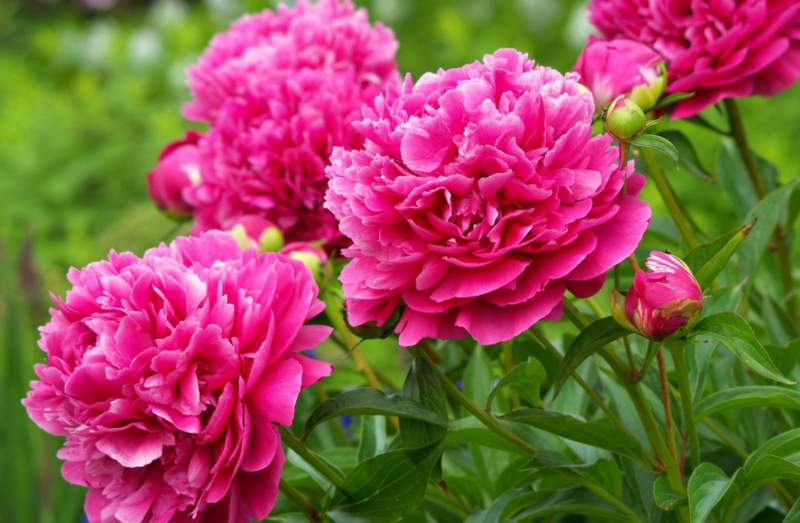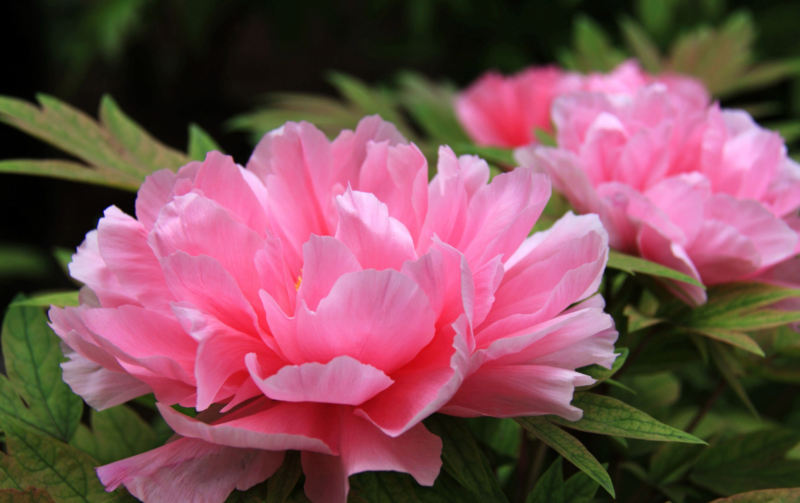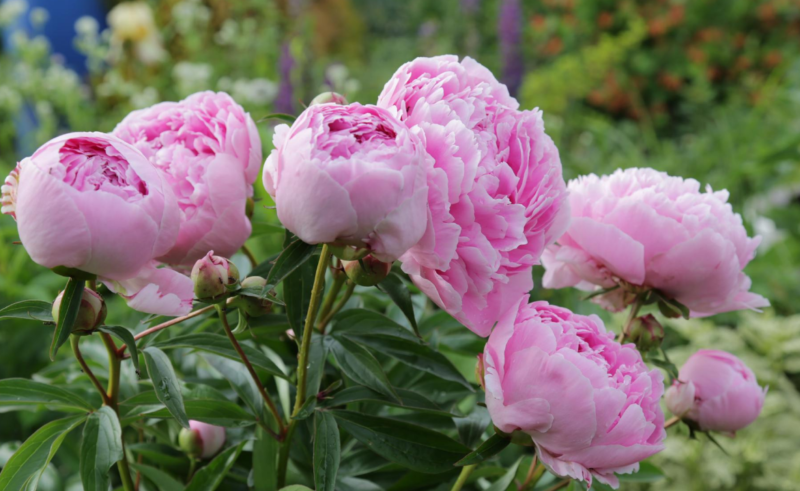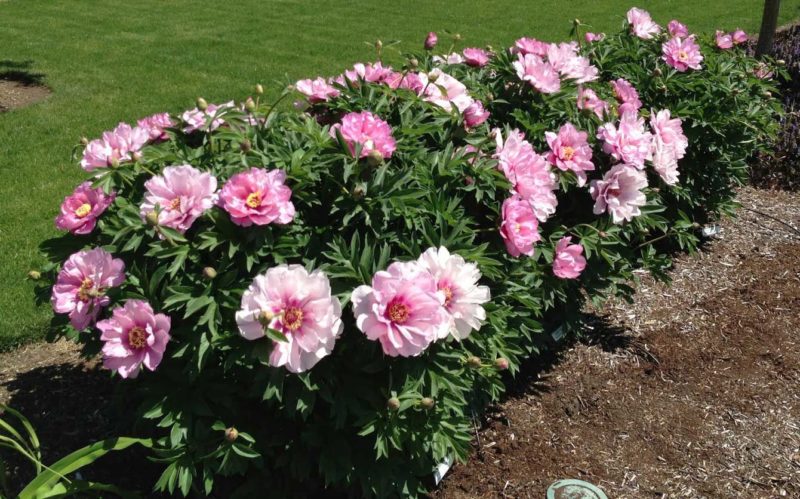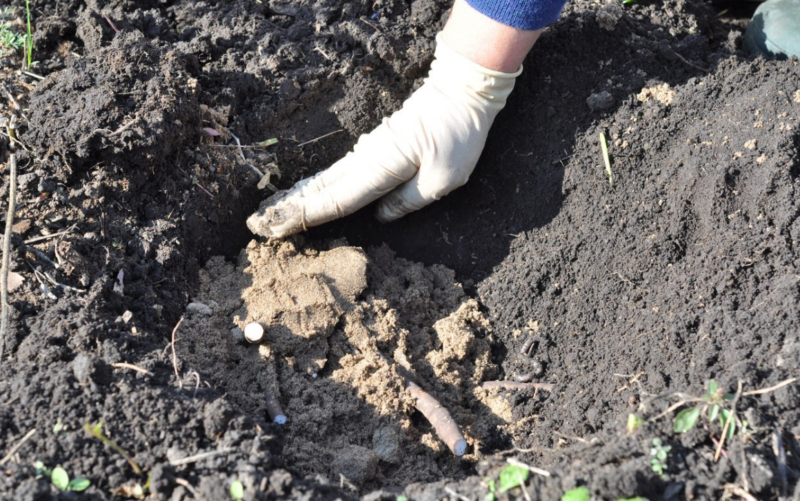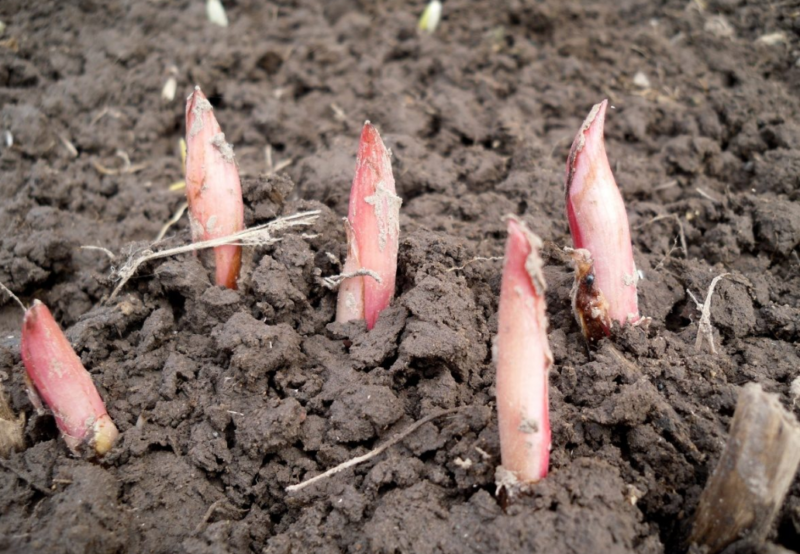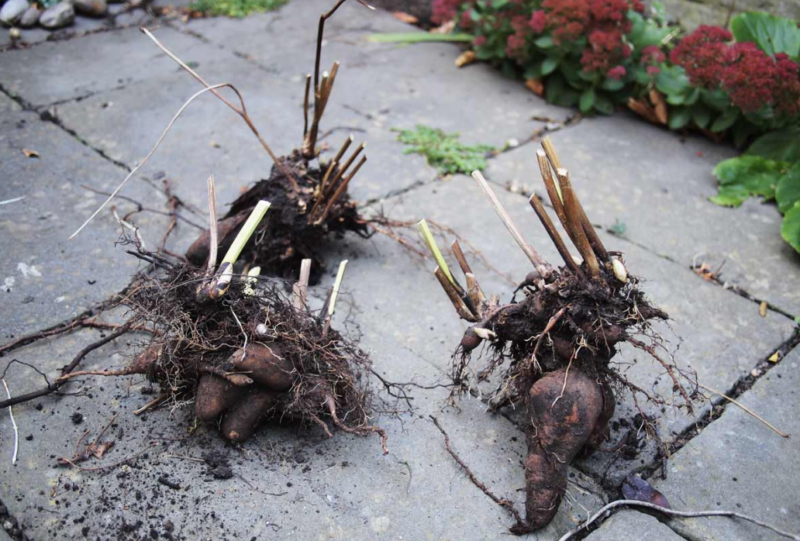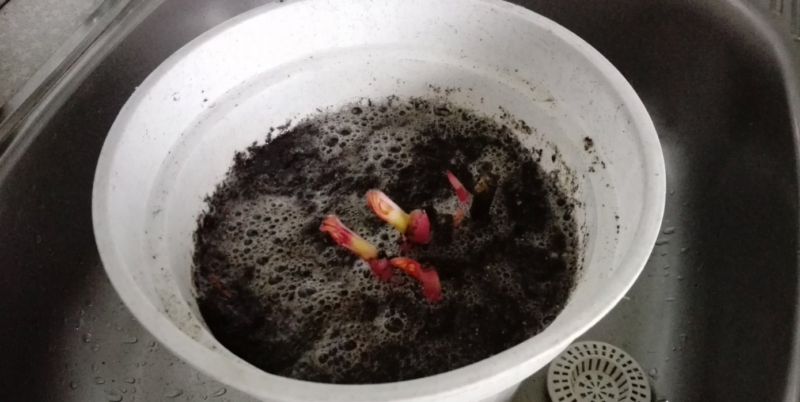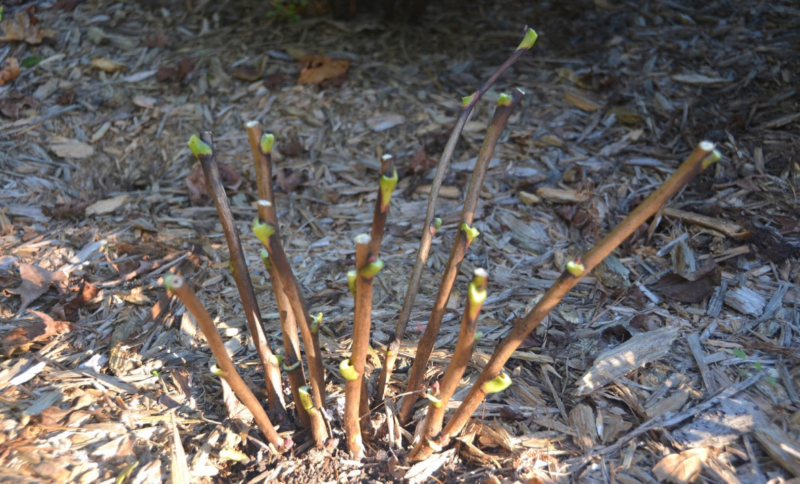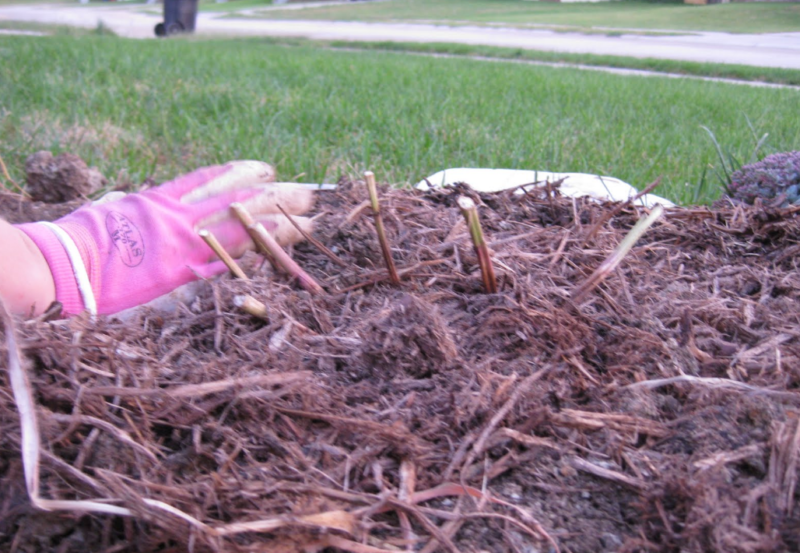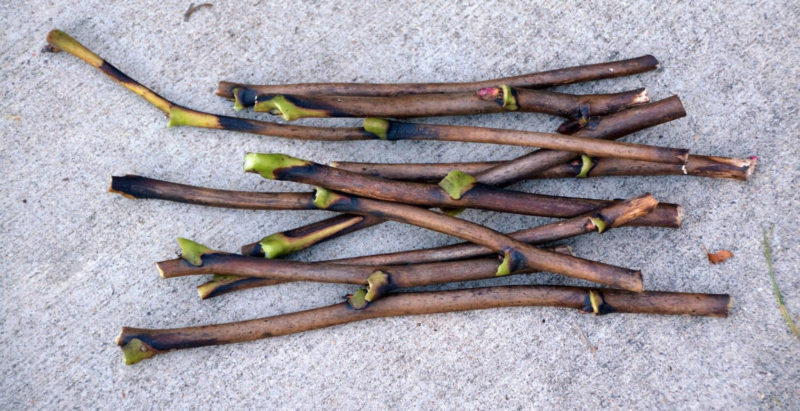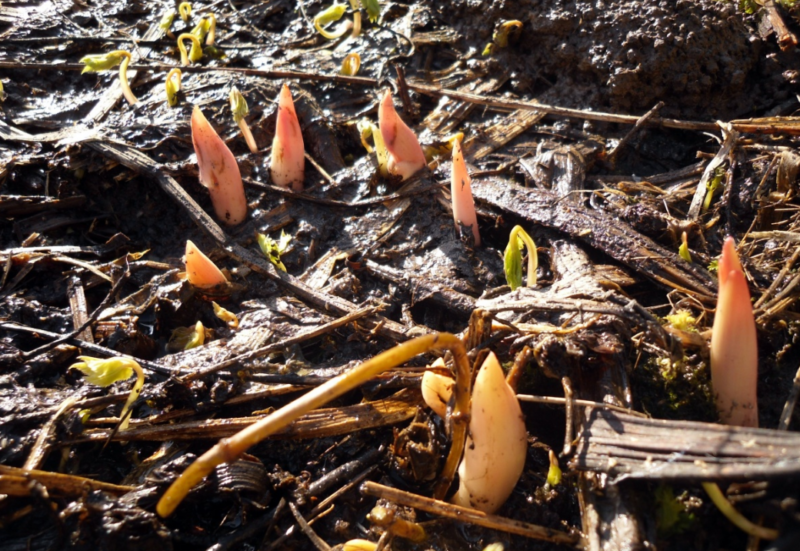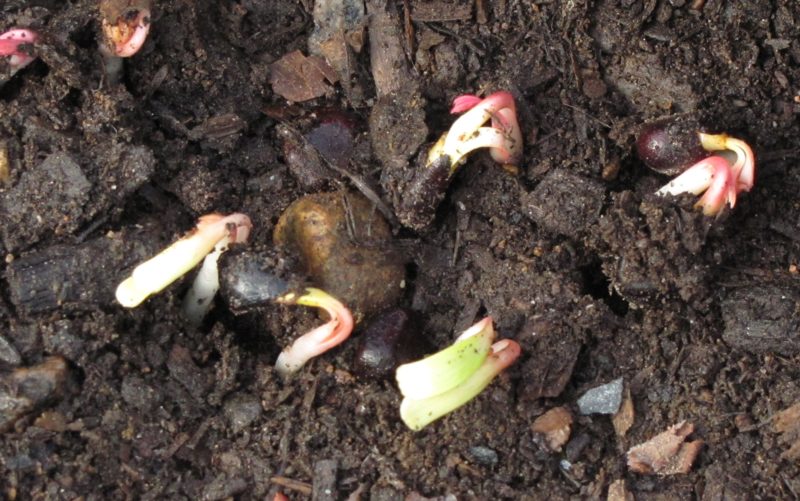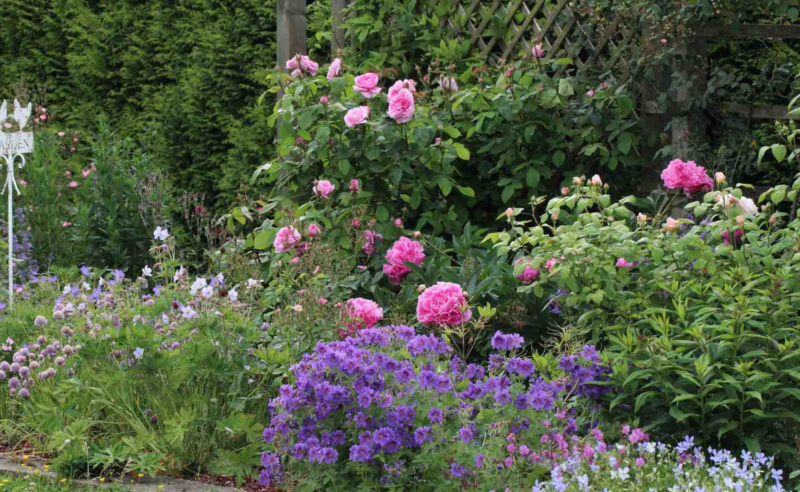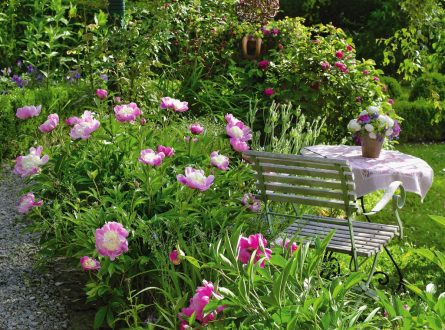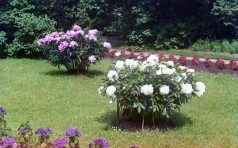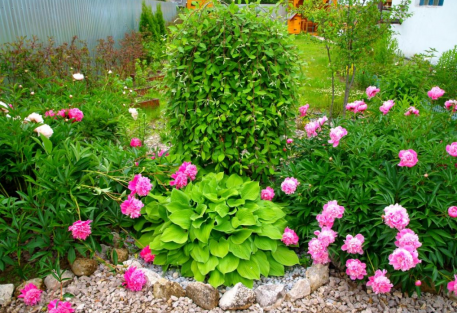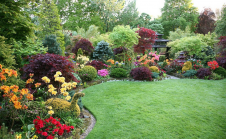Peonies can be found in almost every garden. They are loved for their luxurious range of shades from snow-white to burgundy, for beautiful bouquets of them. Peony flowers are large (up to 25 cm in diameter) with a delicate aroma. If you plant varieties of different flowering periods, then you can enjoy the beauty and aroma of the plant from mid-May to mid-July. But even after flowering, peonies do not lose their decorative effect: beautiful leaves on lush bushes still serve as a decoration of the garden.
Material Content:
Varieties and varieties of peony
Peonies are perennials with more than forty species. It is difficult to list what colors and shades there are peonies. The most common are grassy, tree-like and ITO hybrids.
Grassy
This species has more than 5000 varieties with different flowering periods, the shape of the flowers and the height of the bushes, which in some forms reaches 1 meter. A feature of grassy varieties - the ground part dies annually, renewing in spring with new shoots.
According to the shape of the flower, grassy peonies are divided into the following:
- non-double (Golden Glow variety),
- half-terry ("Miss America"),
- terry ("Pink Cameo"),
- Japanese (Carrara),
- Anemone-like (Rhapsody)
- pink ("Ballerina"),
- castellated ("Nancy").
By flowering time:
- very early - in mid-May ("Karina"),
- the earliest - in early June ("Maxim Festival"),
- medium - in mid-June (Kansas),
- later - at the end of June ("Snow globe").
The duration of flowering for peonies is different: for non-double varieties - about 10 days, semi-double - up to 2 weeks, double - up to 3 weeks.
Breeders regularly delight in new stunning varieties that immediately win the love of gardeners.
But there are varieties that all “pionomanes” dream of possessing, and their owners plant them in a prominent place:
- “Sarah Bernhardt” is a legendary variety with long flowering and unusual densely-sized mother-of-pearl pink flowers that have not been showered for a long time in a vase;
- "Duchesse de Nemours" - recognized as the most beautiful white peony. Narrow pink petals in the center of the bud give a special charm to large double flowers;
- “Red Charm” - a luxurious variety with large dark raspberry flowers, in which the central part consists of two dozen small petals forming a dense ball, the lower petals are large and dense;
- “Scarlet O’Hara” is a non-terry variety, but with incredibly beautiful flowers, with many bright yellow stamens rising above the rich red petals.
Tree-like
Bushes of this deciduous species reach a height of 1.5-2 meters, flowering is plentiful (up to 50 flowers on an adult plant) and long (up to three weeks), but occurs only for 4-5 years after planting. Tree-like peonies do not tolerate transplanting well, but can grow and bloom lushly in one place for up to a hundred years.
Popular varieties:
- "Sapphire" - pink with a raspberry center;
- "Deep blue sea" - purplish red;
- “Snow Pagoda” - creamy white;
- "Kiao Sisters" - the petals in one bud are creamy white and red;
- "Coral Altar" - pinkish-white;
- "Primavera" - very large flowers with a yellow center and white lower petals.
ITO hybrids
This species is a hybrid combining the properties of both herbaceous and tree-like peonies. Like grassy ones, the ground part dies off in the winter, updated in the spring.
Advantages of most varieties:
- strong stems that do not require, unlike grassy, stems;
- unique coloring;
- plentiful flowering;
- the ability to plant not only in the sun, but in partial shade and even in the shade.
The flowers of ITO-pions are large, can be simple semi-double, as well as double. The color of the petals is very different, including yellow, which is not present in grassy varieties.
Popular ITO varieties:
- "Garden Treasure" - light yellow, the number of flowers on an adult bush reaches fifty;
- “Lois Choyce” - creamy pink;
- “Pink Hawaiian Coral” - coral pink;
- "Julia Rose" - apricot pink;
- "Doodle Dandy" - plum.
Choosing a place to land
Grassy and tree-like peonies prefer sunny areas, ITO hybrids grow better and bloom in partial shade.
All three species have the same requirements for the place of growth.
They can not be planted:
- near the trees;
- near houses:
- in flooded areas.
Planting a plant
Peonies can be planted both in autumn and spring. It is very important to maintain a minimum distance: to the nearest bushes - at least 2 meters, to trees - at least 3 m.
Landing pits should be prepared in advance.
They must be deep and wide, since peonies of any kind can grow in one place for decades:
- for grassy - 60x60 cm;
- for tree-like - 50x70 cm;
- for IT hybrids - 90x90 cm.
Plants need to provide good drainage, since stagnation of water can lead to decay of rhizomes and death of the flower.
Ideal soil for peonies:
- drainage - up to 15 cm;
- nutrient mixture (humus, superphosphate, potassium sulfate, compost, wood ash) - up to 20 cm;
- soil with compost - up to 20 cm.
Before landing, the pit should be watered so that the soil is donkey.
The most important rule for planting peonies: the layer of earth above the upper bud of a seedling should be 3-4 cm - for heavy soil, 5-7 cm for light. A deep planting leads to a lack of flowering, a shallow one leads to freezing.
After planting, peonies should be watered abundantly, add soil to level the soil and mulch.
Fall
The ideal time for planting and transplanting peonies is mid-August-early September, when the plant is already at rest, and it will transfer the transplant painlessly.
In the spring
Spring planting is preferred only for tree forms with a closed root system - a guarantee that flowering will come already in the year of planting. It is carried out by the method of transshipment with a lump of earth in a pit prepared in advance.
Seedlings of grassy and ITO-peonies usually go on sale in the spring, but they do not tolerate planting at this time of the year. It is recommended to plant a seedling in a spacious flower pot and keep it in a cool dimly lit room, slightly moistening the soil.
In late April and early May, a peony is planted in the front garden without being removed from the pot. In the fall, they are transplanted to a permanent place by transshipment from a pot into a prepared pit.
Proper care
Peony with all its magnificent beauty does not require much attention. Care for it is watering, top dressing, weeding, pruning.
Watering
It is necessary to water the plant under the root. The frequency depends on the weather: in rainy summer, reduce to a minimum to prevent root decay. With prolonged rains, special means can be introduced to protect the roots from rotting: biofungicides "Alirin-B" or "Gamair". Soil treatment should be carried out three times with an interval of 2 weeks, dissolving 1 tablet in 5 liters of water.
Spraying buds
Unopened buds of peonies are often fond of ants migrating with cut flowers to the house. It is enough to spray the buds with a weak solution of salt - and the ants will choose a different path.
Pruning
After flowering, beautiful carved peony leaves maintain the decorativeness of the bushes, turning purple in the fall.
Trimming shoots of grassy and ITO-pions is best done after the first frost, allowing the plant to accumulate strength and form more substitution buds. Stems are cut at a minimum distance from the soil surface.
Pruning of tree-like peonies is carried out in the spring, shortening shoots by 10 cm and removing dry branches. In autumn, peonies of this species are not pruned.
Preparation for winter
Grassy and ITO-peonies are frost-resistant plants that do not require shelter. It is worth taking care of young bushes and transplanted ones: mulch after pruning with dry peat or light earth with a layer of 6-8 cm, you can cover with a spruce top.
It is advisable to shelter tree-like ones for the winter: gently tie the stems, mulch the trunk circle, build a frame over the bush, filling the space with spruce branches or dry foliage, cover with “breathing” material (lutrasil or spandball) from above.
Peony breeding technology
Dividing the bush
In this way, grassy and ITO peonies are propagated. A favorable time for this action is the beginning of autumn.
You can share bushes that have already fully bloomed for at least two years at the age of 4-5 years. Peonies grow rhizomes, so older bushes are difficult to dig and divide without damaging powerful roots.
The bush is dug, retreating 30 centimeters from the roots. Old roots up to 15 cm are cut off from the dug plant. If the bush is large, then a wedge is driven into its middle, which divides it into several parts.
On each dividend should be:
- part of the root neck;
- 3-4 eyes;
- a few roots.
Saplings carefully inspect, remove voids and unhealthy places, disinfect for half an hour in a solution of potassium permanganate (1 g per 2 l of water) or Fitosporin (4 ml per 1 l of water), cut the stems to 10-15 cm and plant them in a prepared hole .
Cuttings
Cuttings of peonies can be carried out in two ways: root and stem.
All three types of peonies can be propagated by root cuttings, but not all varieties, but only those in which buds of growth are formed on the accessory roots.
In mid-July, a segment with a sleeping kidney is separated from the rhizome, disinfected with potassium permanganate (1 g per 2 l of water) and planted in prepared loose soil, deepening by 4-5 cm.
Cuttings should be regularly watered, avoiding drying out of the soil, remove weeds and loosen the soil. For winter, it is imperative to mulch and cover with spruce branches or fallen leaves. Flowering will have to wait 4-5 years.
The stem method is suitable only for grassy peonies. Florists use it to propagate the most valuable varieties, so as not to disturb the root system.
This type of propagation, on the one hand, is simple, on the other hand, it is ineffective, since the survival rate of such cuttings is low and it is necessary to harvest a large amount of planting material.
Stalk cuttings are harvested from a 5-year-old plant a week before flowering or during flowering.
Cherenkovaniy sequence:
- From the middle of the bush, quickly pull out the stem with the root or cut it as low as possible.
- Cut the stem into cuttings, there should be 2 internodes on them: the lower cut is under the leaf that is removed; the upper cut is made at a distance of 2 cm above the second internode (its leaves are shortened by a third).
- The cuttings are soaked for 2.5 hours in the root stimulator ("Kornevin", "Epin", "Heteroauxin").
- Planted at a slight angle to a depth of 4 cm in partial shade in the prepared bed (in the ground for it when digging you need to add compost, sprinkle sand on top).
- A transparent shelter (glass or film) is built above the garden.
- The mini-greenhouse is regularly ventilated, seedlings are watered and weed.
- For the winter, cuttings must be covered with fallen leaves, spruce branches or brushwood.
- In the spring, the grafted cuttings are transplanted to a permanent place.
Undercutting
This method is suitable for grassy and ITO-peonies. It must be carried out in the spring, when the earth warms up.
Shovel the ground from the bush to a depth of 20 cm. Cut the top of the plant 7 cm below the renewal buds horizontally with a sharp shovel. Dismantled the top of the bush into cuttings and planted in prepared soil, previously disinfected with potassium permanganate or Fitosporin (as when propagating by dividing the bush). Rhizomes remaining in the ground should be covered with earth and mulched.
Care for them includes watering, weeding, cultivating. Already in the fall, the bush will recover due to sleeping buds.
Layering
For this method, 5-8-year-old bushes are suitable, from which in the spring, as soon as the earth warms up, you need to scoop up the earth so that the kidneys are visible.
Further actions:
- A rectangle is set to the size of the bush, preferably from wooden slats, up to half a meter high, sprinkled with earth on the outside.
- Inside, the rectangle is filled up with 10 cm of a mixture of garden soil, compost and sand.
- In the future, growing shoots should be regularly sprinkled with a mixture enriched with fertilizers (garden soil, manure, compost, superphosphate) to a 30-centimeter height.
- The buds on the stems must be nipped, leaves must be preserved.
- Do not allow the soil to dry out.
- At the end of August, carefully remove the rectangle and scoop up the earth from the layering.
- Cut off rooted shoots and plant them for growing in a prepared place.
- For winter, shoot the shoots and cover them with dry leaves or spruce branches.
Seeds
This method is often used by breeders to create new varieties. Freshly sown seeds are sown in August in light, loose soil. Flowering occurs only 5 years after sowing.
Fertilizer and fertilizing
For full growth and abundant flowering, peonies need to be fed and fertilized periodically.
The first top dressing is carried out at the end of April with complex fertilizers (Kemira Universal, rotted manure), which are scattered in the root circle, sprinkled with earth and watered.
For the second top dressing (10-14 days after the first) and the third (2-3 weeks after the second), it is ideal to use "Kemira-combi", sprinkling it in a near-stem circle and watering or dissolving in water.
In early September, when the plant accumulates strength for future flowering, you need to feed the bushes with superphosphate (dissolve 1 tablespoon of double superphosphate in 2 liters of water or 2 tablespoons of simple).
Diseases and Pests
Peonies have good immunity.
But they can also be susceptible to fungal and viral diseases:
- rust - brown or reddish convex spots appear on the leaves, which must be removed and burned, and the bush treated with a 1% solution of Bordeaux fluid;
- gray rot - a gray coating appears on the leaves, buds and stems, and the plant withers. It is necessary to remove the affected areas, treat the plant 2-3 times with Alirin (2-3 tablets per 1 liter of water);
- powdery mildew - a white coating on the upper side of the leaves. Spray 2-3 times with “Alirin” (2-3 tablets per 1 liter of water).
Of insect pests, the decorativeness of peonies is threatened by aphids, gall nematodes, bronze, hop hopworms, thrips. If they are found, the bushes must be sprayed with “Fufanon” (10 ml per 1 liter of water) or “Karbofos” (30 g per 5 liters of water).
Combination with other colors
Peonies blend beautifully with many perennials.
Primroses (crocuses, hyacinths, daffodils, primroses, tulips, white flowers), planted next to peonies, bloom before the leaves appear in the latter. But then their not-so-neat appearance after flowering will be covered by grown peonies.
Irises, lilies, daylilies, erimurus, phloxes, astilbe, hosts are wonderful neighbors. But they can not be planted close to peonies, which require significant space.
Peonies in landscaping
Peonies are used in various garden compositions:
- in a single landing in the middle of a lawn or surrounded by ground cover plants;
- in group plantings of 2-3 plants, choosing varieties that are in harmony in color;
- on a flower bed with hybrid tea roses that bloom later than peonies against the background of their lush green bushes;
- on a large flowerbed, in the center of which tall flowers are planted (delphiniums, erymuruses, irises), peonies around the circumference, between them are undersized perennials (incense, daylilies, hosts, geyherah), primroses (crocuses, daffodils, hyacinths, tulips);
- in the background curbs and rabatok, planting peonies of the same variety or contrasting flowers, and in the foreground placing low perennial or annual garden flowers (primrose, violets, marigolds, pansies).
Each grower will find acceptable options for flower beds with peonies and other flowers that you can change, improvise, achieving perfection.


